Background
NE3, home of the Centre for Architectural Ecology, was built in 1971 at BCIT’s Burnaby campus. Under the direction of Dr. Maureen Connelly, graduate students there are engaged in applied research, integrating building science and living architectural systems (green roofs and walls, and building acoustics), and using the centre as a living lab.
The building has a total of 27 windows with aluminium frames; 4 of them were double-pane and the rest were single-pane. The window-to-wall-ratio is 8.1%. As the building was constructed in 1971, its airtightness is not comparable with most of the modern buildings that are typically found today.
Problem and/or Opportunity
While NE3 has a heating system, its only cooling system came from fans, opening of windows and a small air conditioner installed in one of its windows. Furthermore, the lack of sealants and poor connection between the building paper and the window were sources of air leakage/energy waste. The windows system did not meet the current minimum thermal conductivity and airtightness requirements imposed by Canadian and local codes. As windows generally have a higher impact on the heating and cooling load than other building elements, upgrading windows should lead to better insulation.
Due to the age of the building (built in 1971) the building has been tested for presence of hazardous materials. The test results show that an area of concern that would impact a window replacement project is the possible presence of asbestos in the drywall mud.
Solution
Windows:
With the help from Centra Windows, NE3 got its chance. Centra Windows was generous with their support; not only did they customize and manufacture the windows, but they also carried out the installation. BC Building Science was also very generous, providing all the engineering services required for this building envelope upgrade. The work occurred from April 25th to May 3rd 2016, 27 and all 27 windows were replaced. The new windows would reduce the overall U-value, thus increasing its thermal performance. The solar heat gain coefficient (SHGC) of the new windows was also lower, limiting the amount of solar heat transmitted and reducing the need for indoor cooling. Furthermore, the original building paper was replaced to minimize the gaps in the windows.
Hazardous materials:
Prior to the removal of the windows, work has been completed in collaboration with Centra, BCIT’s Safety department, and a hazmat consultant. The team developed a standard operating procedure (SOP) describing how to remove/install the windows while keeping workers and building occupants safe. The SOP included many aspects including the installation of a layer of 6 mil polyethylene sheets to seal the interior to avoid exposure to the asbestos. The procedure allowed for both wet removal and use of a vacuum with an HEPA filter. Finally, the SOP was approved by all parties and a notice of project (NOP) was submitted to WorkSafe BC.
Technologies Implemented
The technologies implemented included the following:
- The new windows installed were double-pane, with vinyl frame, low-e coating, argon-filled, U-value of 1.6 W/m2K, SHGC of 0.3, and visual transmittance of 64%.
- The building paper was replaced by spun-bonded polyolefin (Tyvek)
- New metal flashing was used to divert the water away from the internal building materials
- New factory primed cedar trims were installed to enclose the window frames
Energy Reduction
The envelope-driven energy performance of a building is impacted by many factors as shown in the figure below.
Extract from: PHA (Passive House Academy) Passive House Canada
The insulation, the air barrier, the thermal bridges, the glazing and the ventilation all have an impact on the energy performance of the building.
Energy savings for NE3 with new Centra windows were analysed for two models: one with the new windows and another with the new windows with a decrease in air leakage of 15% attributed to the increased air-tightness in the new windows. Space heating forms the majority amount of the energy used in NE3 and the windows upgrade were estimated to reduce that usage by 0.9% in the first model and by 4.1% in the second. The annual total energy savings for the building was 0.7% in the first model and 2.0% in the second model.
This is not a significant increase in energy efficiency and is explained by deficiencies in the building enclosure, including poor airtightness as indicated by the infrared images. The low window-to-wall ratio of this building of 8.1% reflects that for this particular building, the impact of windows performance on energy performance is expected to be low. The impact of the same window improvement in a building with proper airtightness, thermal insulation and higher window-to-all ratio would be expected to be much higher.
Additional Benefits and Features
The Factor Four team’s interest is mainly with energy performance. However, replacing windows provides additional benefits other than energy savings.
Occupant thermal comfort:
The information presented below is an extract from Lawrence Berkeley National Laboratory.
An older window with a lower glass temperature feels colder because more heat is radiated from a person’s body to the window. Cold glass can also create uncomfortable drafts as air next to the window is cooled and drops to the floor. This sets up an air movement pattern that feels drafty and accelerates heat loss. High performance windows with lower U-factors will result in a higher interior window temperature in winter and thus greater comfort. Proper installation along with weather stripping designed to seal tightly (for operable windows) will also improve comfort by reducing cold air leakage.
In summer, strong direct sunlight strikes people and interior surfaces, creating overheating and discomfort. Windows with low solar heat gain coefficients will reduce the solar radiation coming through the glass and associated discomfort. Low solar heat gain low-E glass (spectrally selective) reduces heat gain while still providing sufficient light and view.
Noise pollution control: Double vs. Triple-Pane Windows:
The thermal performance of a triple-pane window is usually higher than a double-pane; however, the upgraded windows were all double-pane. Since the Centre for Architectural Ecology strives to bring innovation to building sciences through the integration of both architectural systems and building acoustics, it was important to consider acoustic performance as well. NE3 has shown acoustical problems in a specific low frequency (around 150 Hz). It was determined that double-pane windows would have an acoustical advantage over triple-pane windows. The new frames installed allow for both double-pane and triple-pane windows to be used in case experiment with acoustics and energy performance of windows with more glazing was to be conducted.
Project fast facts
- NE3 has 27 windows and the window-to-wall ratio of is 8.1%.
- Space heating is the largest share of energy consumption in NE3.
- Old windows had aluminium frame; 4 were double-pane and 23 single-pane.
- New windows are all double-pane with vinyl frame, low-e coating, argon-filled, U-value of 1.6 W/m2K, SHGC of 0.3, and visual transmittance of 64%.
- Estimated 0.9-4.1% energy reductions for space heating annually.
- Estimated 0.7-2.0% total energy reductions annually.
Project partners
BCIT would like to thank the team from Centra Windows for their generosity, efforts and professionalism. The project was made possible by the donation of materials, labour and expertize. Centra has long been committed to giving back to the community and they were instrumental to the success of this project.
BCIT would also like to thank the team from BC Building Science for their generosity and quality work. All the engineering services were provided by BCBS as a donation.
The case study found in the project folder below was prepared by Frederico Martins de Barro, MASc. Canditate in BCIT Building Science.
Project folder
- East-facing windows before upgrade
- West-facing windows before upgrade
- Positioning 6 mil polyethylene before windows removal
- East-facing windows after upgrade (inside)
- East-facing windows after upgrade (outside)
- East- and South-facing windows after upgrade
- South-facing windows after upgrade (inside)
You can download the full report at:
Case Study – NE3 Window Replacement Lessons Learned and Energy Performance Impact
You can review the details by downloading the drawings prepared by BC Building Science:
CENTRA WINDOW DETAILS prepared by BC Building Science
More Information:


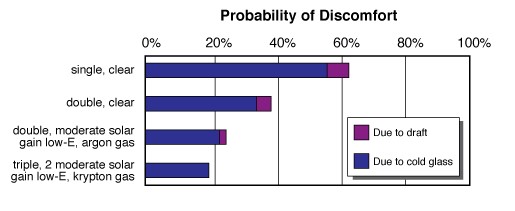






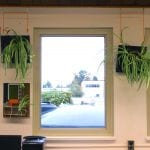
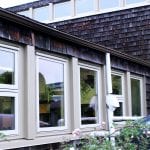
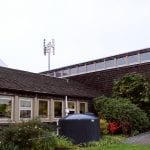


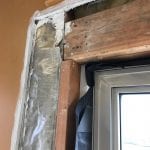

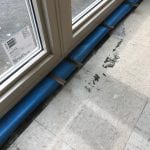



[…] An employee-owned company, Centra generously donated and installed 27 double-paned vinyl window—a complete replacement of all NE3’s windows. Not only did this reduce energy consumption and make the space more comfortable, it also […]